Exploring The World Of Hydrangea Types
Each type possesses unique characteristics, including bloom size, color, and shape. This blog will explore the world of hydrangea types, from bigleaf hydrangeas to climbing hydrangeas.
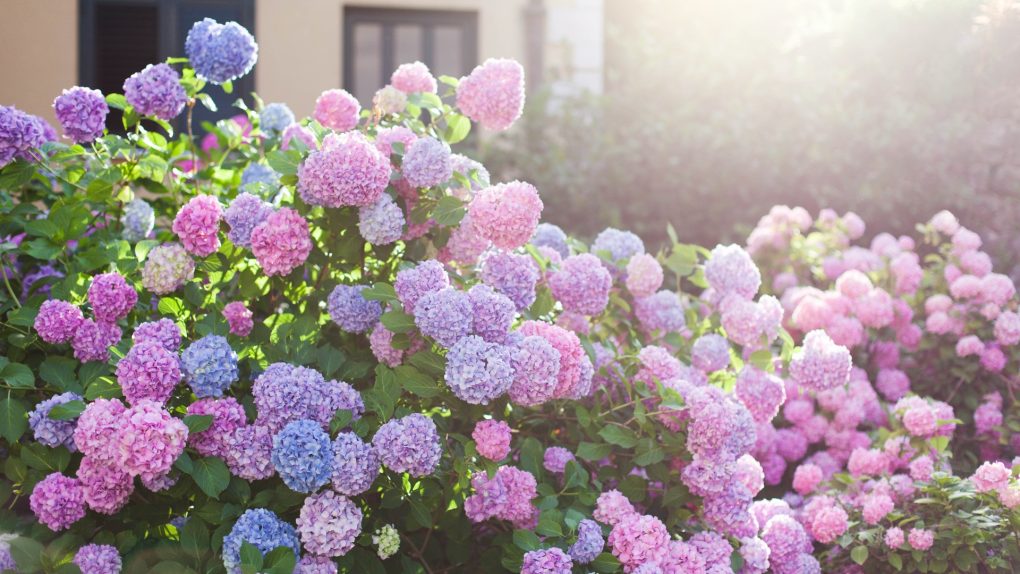
Table of Contents
Types of Hydrangea
There are several types of hydrangeas, each with its distinctive characteristics. Let’s explore them:
Bigleaf Hydrangea (H. macrophylla)
Bigleaf hydrangeas showcase large blooms that change color based on soil acidity. They come in shades of pink, blue, or white. These hydrangeas prefer moist, well-drained soil and partial shade. There are two variations of bigleaf hydrangeas: mophead and lacecap.
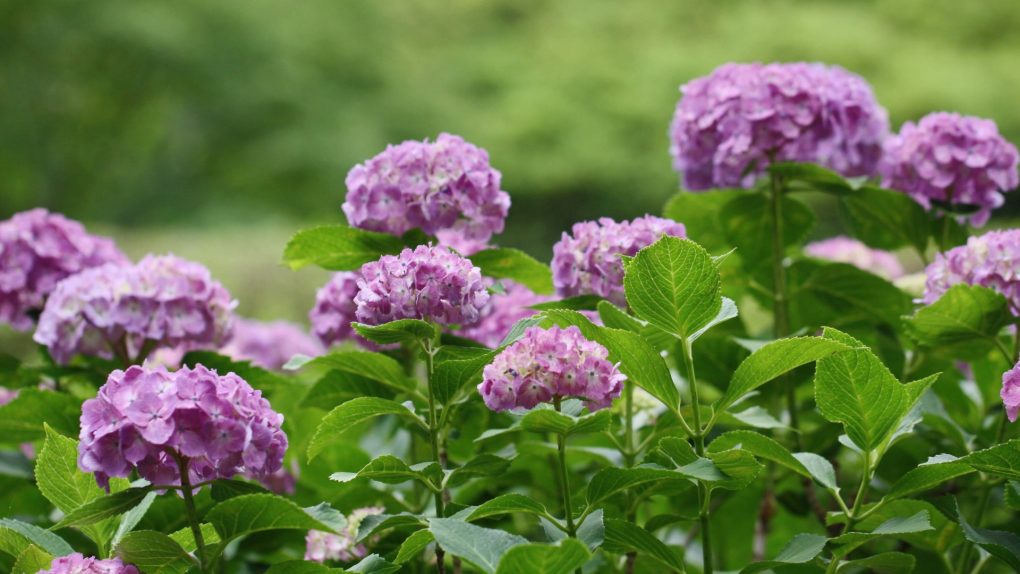
Mophead Hydrangea (H. macrophylla)
Mophead Hydrangea (H. macrophylla) is a popular cultivar known for its large, ball-shaped clusters of flowers. The blooms can vary in shades of pink, blue, and purple. These versatile shrubs can be grown in containers or planted in garden beds. Regular watering and pruning are necessary to maintain their shape and health.
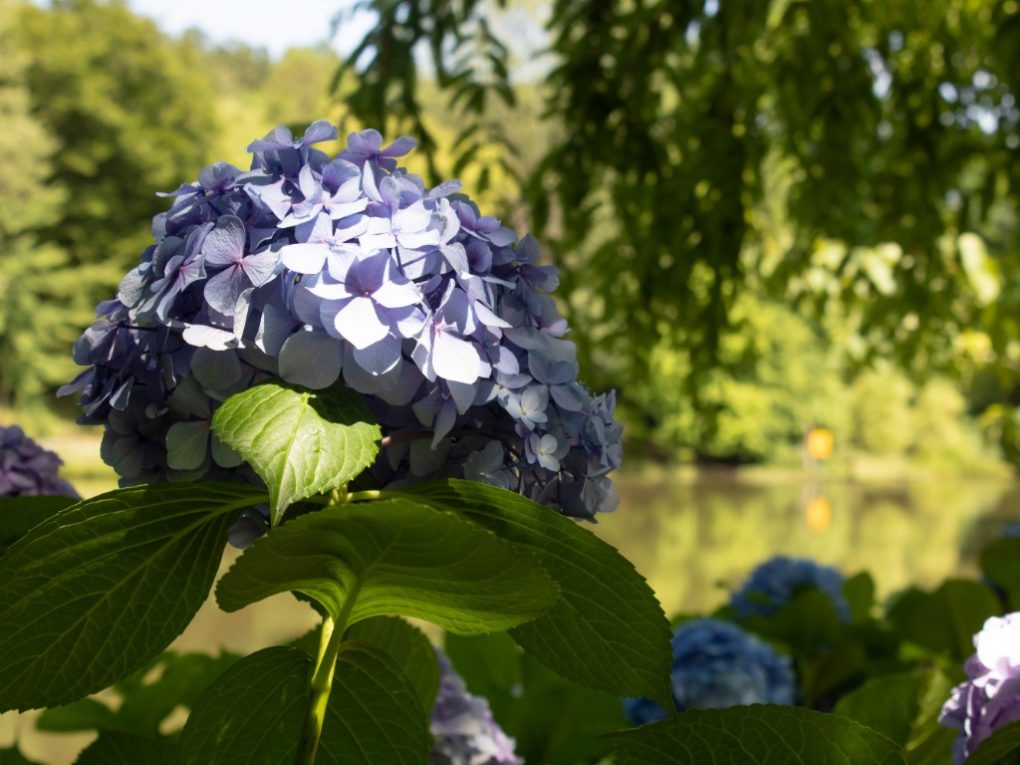
Lacecap Hydrangea (H. macrophylla)
Lacecap Hydrangeas (H. macrophylla) feature delicate flat flowerheads with a ring of showy flowers surrounding the center of small flowers. They come in shades of pink, blue, and white. These hydrangeas require pruning to maintain their shape and health, and they prefer well-drained soil and partial shade.
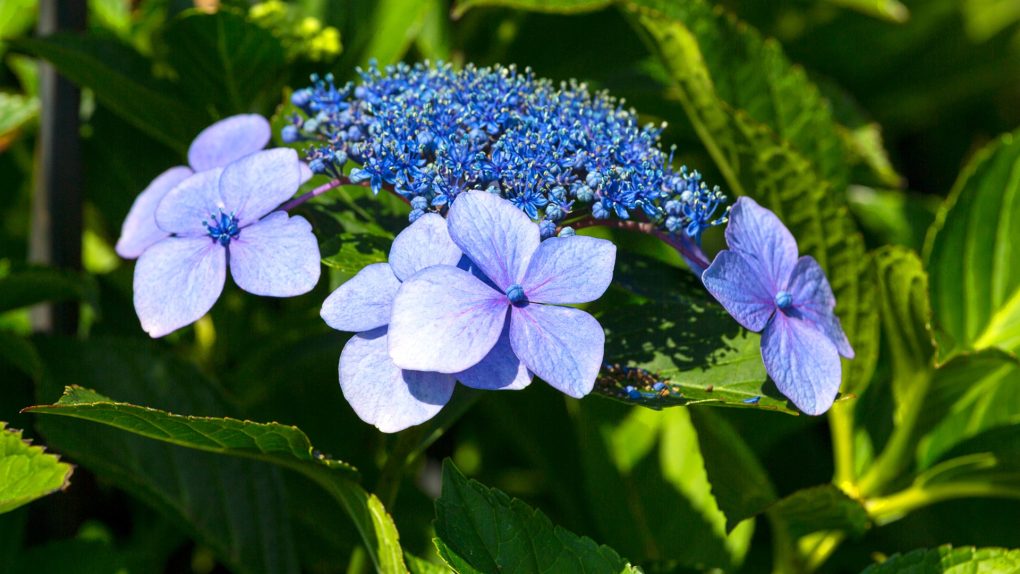
Panicle Hydrangea (H. paniculata)
Panicle Hydrangea, also known as H. paniculata, is a hardy shrub famous for its cone-shaped flower clusters. In mid-to-late summer, the flowers start as white or greenish-white and gradually turn shades of pink or red. Panicle hydrangeas can thrive in full sun or partial shade and adapt well to various soil types. Pruning is essential for their optimal health and shape.
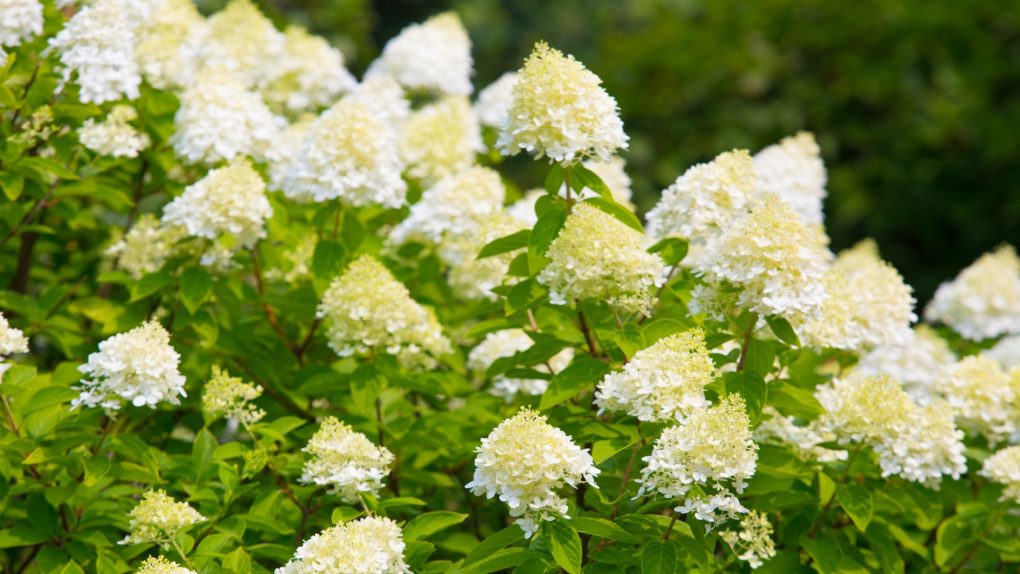
Oakleaf Hydrangea (H. quercifolia)
Native to the southeastern United States, Oakleaf hydrangea (H. quercifolia) produces large, cone-shaped clusters of white flowers that eventually turn pink. It thrives in partial shade with well-draining soil, and in autumn, it showcases deep red to purple foliage. Regular pruning is necessary for maintenance.
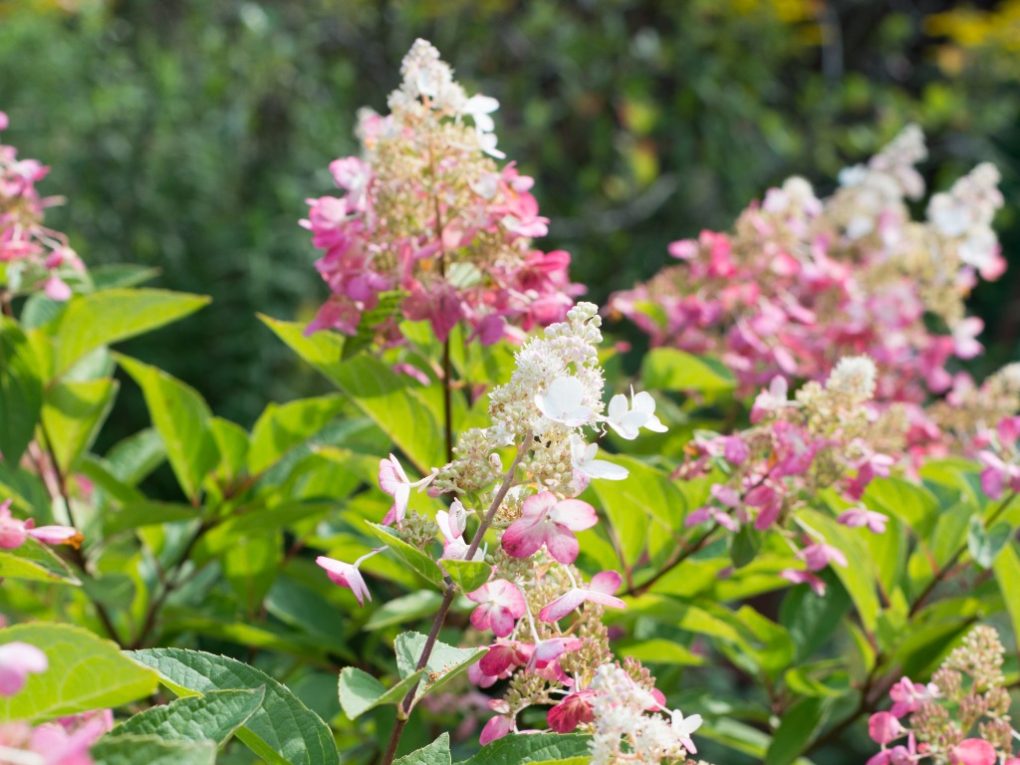
Climbing Hydrangea (H. petiolaris)
Climbing Hydrangea (H. petiolaris) is a slow-growing vine that produces large white flowers and dark green foliage, which turns yellow in the fall. Unlike other hydrangeas, it prefers partial shade, well-drained soil, and can tolerate colder temperatures. It adds vertical interest to your landscape without overpowering it.
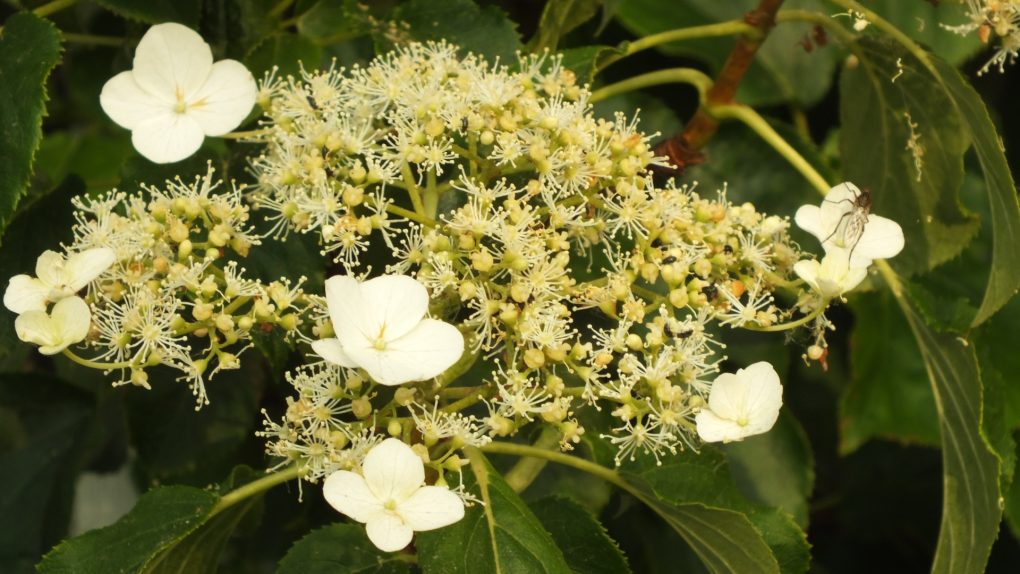
Varieties of Bigleaf Hydrangeas
Bigleaf hydrangeas are a diverse group of shrubs that come in various types, including mophead, lacecap, and climbing. These plants feature large leaves and vibrant flowers that bloom in early summer. They thrive in well-drained soil with part shade to full sun.
Blushing Bride (H. macrophylla ‘Blushing Bride’)
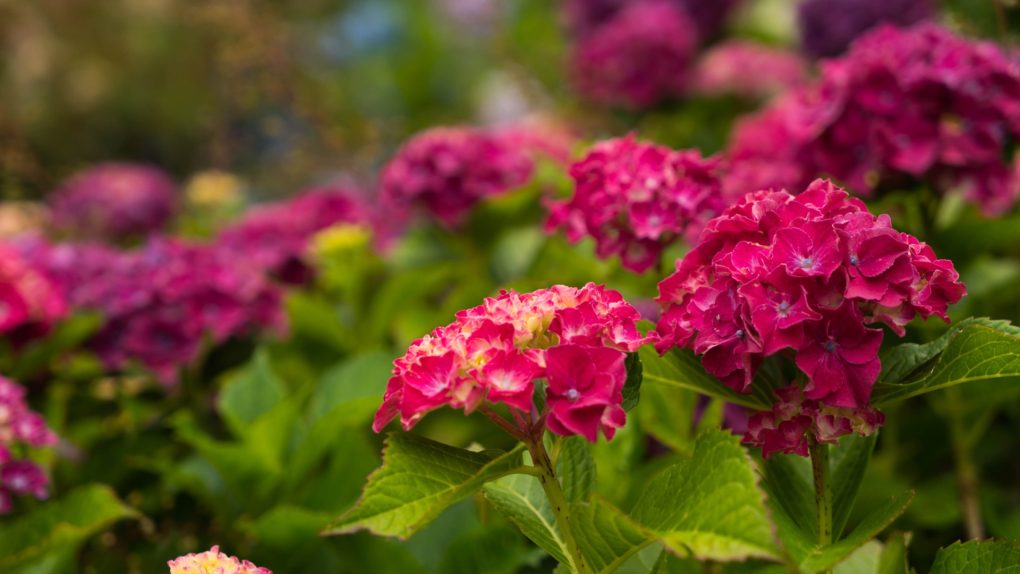
Blushing Bride is a stunning variety of Bigleaf Hydrangea that produces beautiful white blooms. As they mature, the flowers transform into striking shades of pink. This cultivar is perfect for smaller gardens or container planting. It thrives in partial shade with well-drained soil and offers long-lasting blooms throughout the summer and fall. Blushing Bride is also an excellent addition to any cut flower arrangement.
Endless Summer Bloomstruck (H. macrophylla ‘Endless Summer Bloomstruck’)
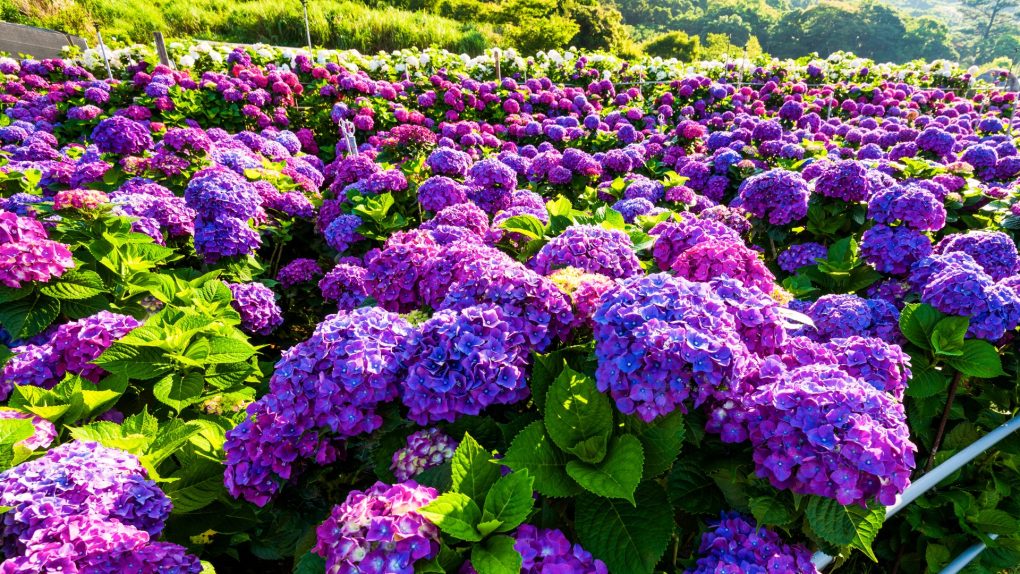
Endless Summer Bloomstruck is ideal for gardeners who want a Bigleaf hydrangea that blooms on old and new wood. It boasts stunning and vivid pink or purple mophead-shaped flowers. This cultivar requires partial sun to shade, consistent watering, proper pruning, and well-drained soil with a pH between 6.0 and 6.2. It can be used as an accent in gardens or as cut flowers for floral arrangements.
Incrediball (H. arborescens ‘Incrediball’)
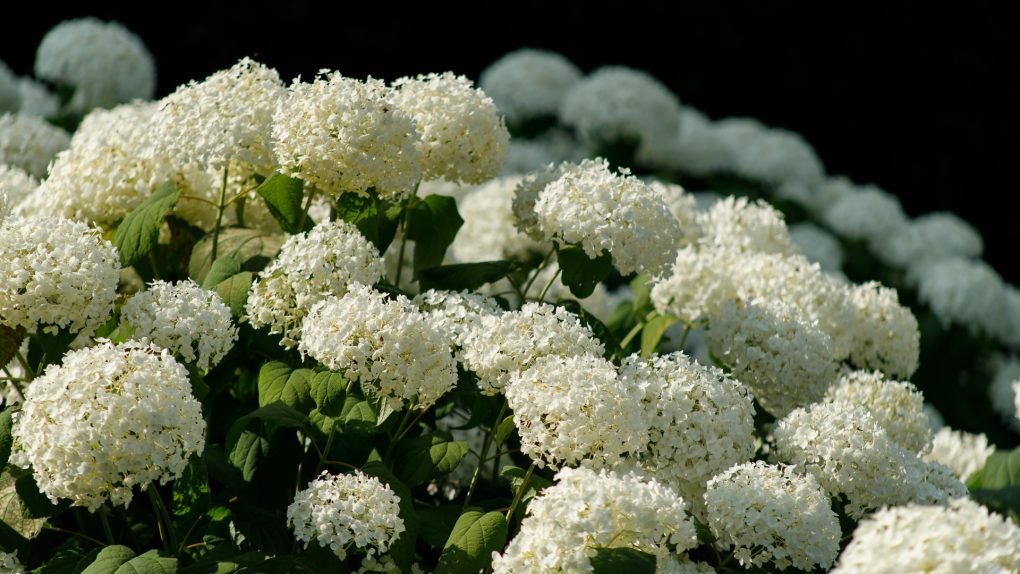
Incrediball is a remarkable bigleaf hydrangea cultivar with large, round flower clusters. The clusters start as green buds and transform into pure white blossoms, reaching up to 12 inches wide. In addition to its hardiness and strong stem structure, Incrediball makes for a stunning garden display or hedge planting option.
Nikko Blue (H. macrophylla ‘Nikko Blue’)
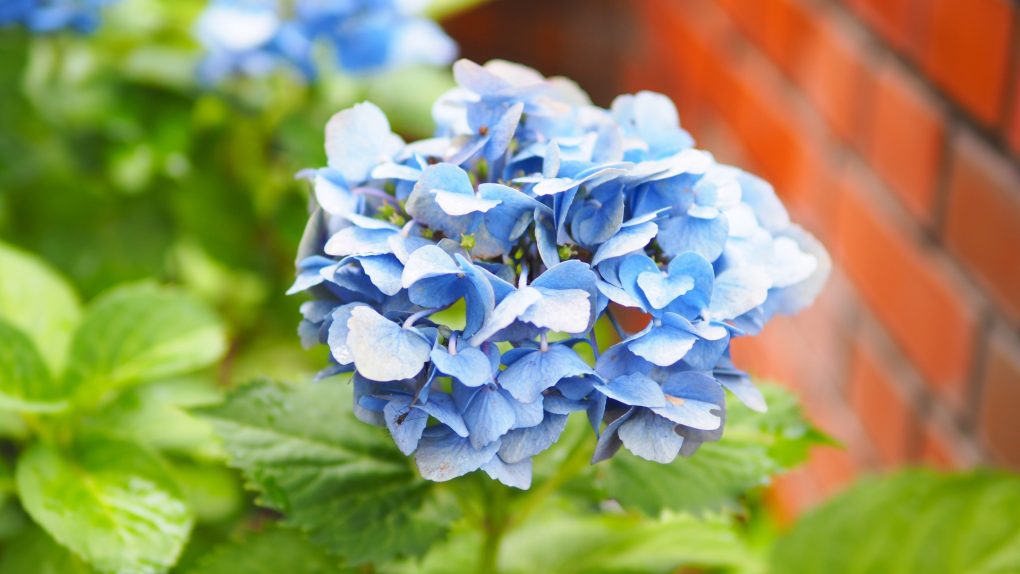
Nikko Blue hydrangea boasts striking blue flowers amid green foliage. It can grow up to 6 ft tall and thrives in sun and shade. Regular watering and well-drained soil are necessary for optimal growth, and pruning at the right time encourages abundant blooms. This hardy plant blooms from late spring through summer, bringing vibrancy to any garden.
Varieties of Panicle Hydrangeas
Cone-shaped panicle hydrangeas are hardy and popular, with Limelight being the favorite followed by Little Lime, Pinky Winky, and Vanilla Strawberry. Achieving healthy growth and full blooms requires pruning in late winter or early spring.
Limelight (H. paniculata ‘Limelight’)
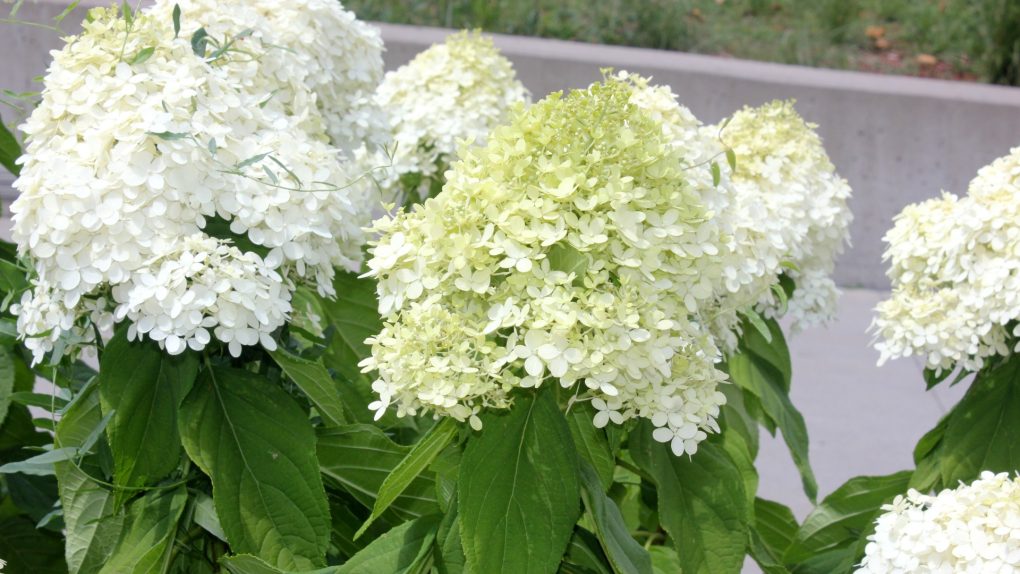
Limelight is a popular panicle hydrangea cultivar with large cone-shaped flowers. The flowers start green and then turn to beautiful shades of pink and burgundy in the fall. Limelight hydrangeas are easy to care for and cold hardy, making them a great addition to any landscape.
Little Lime (H. paniculata ‘Little Lime’)
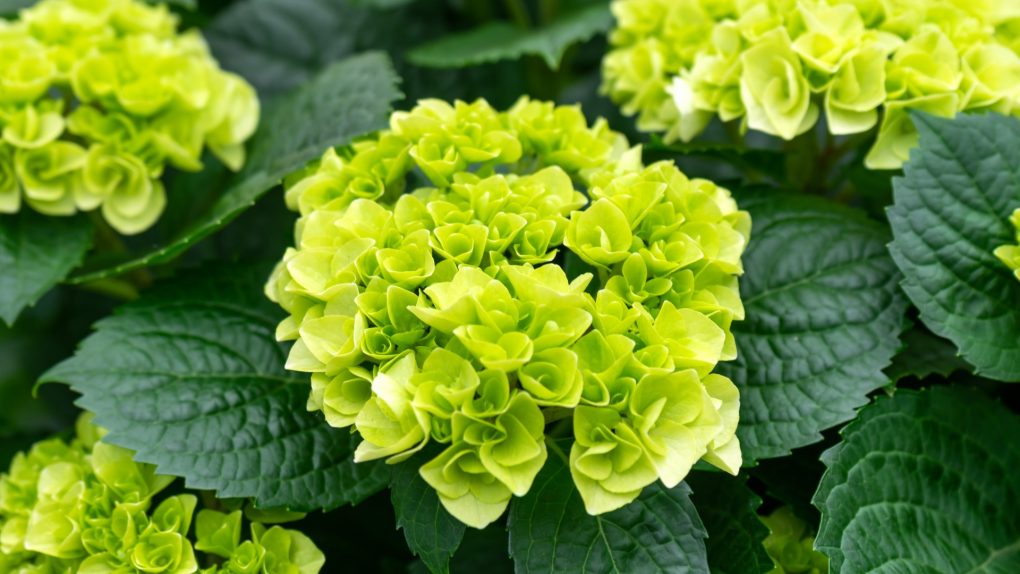
Little Lime is a compact shrub that produces white cone-shaped blooms. As the blooms mature, they turn shades of pink and burgundy in the fall. This variety thrives in well-draining soil and prefers morning sun and afternoon shade. Pruning in late winter or early spring promotes new growth.
Pinky Winky (H. paniculata ‘Pinky Winky’)

Pinky Winky is a Panicle hydrangea variety that produces stunning pink and white cone-shaped blossoms from June through September. This fast-growing shrub can reach up to 8 feet in height. It is highly tolerant of full sun or part shade and is hardy and resistant to pests and diseases.
Pee Gee (H. paniculata ‘Grandiflora’)
Pee Gee is a popular panicle hydrangeas with large cone-shaped flower clusters. The clusters start as white and gradually turn pink as they mature. Pee Gee hydrangea is easy to care for and can thrive in full sun and soil types. It’s known for blooming late in summer, providing color when other plants are fading. It can be pruned into a tree form or left to grow as a shrub.

Varieties of Oakleaf Hydrangeas
Oakleaf hydrangeas are shrubs with foliage resembling oak leaves. Their cone-shaped white flowers turn pink with age. Plant them in partially shaded, well-drained soil to add color to your garden. Popular varieties include ‘Alice’, ‘Snow Queen’, and ‘Pee Wee’.
Alice (H. quercifolia ‘Alice’)
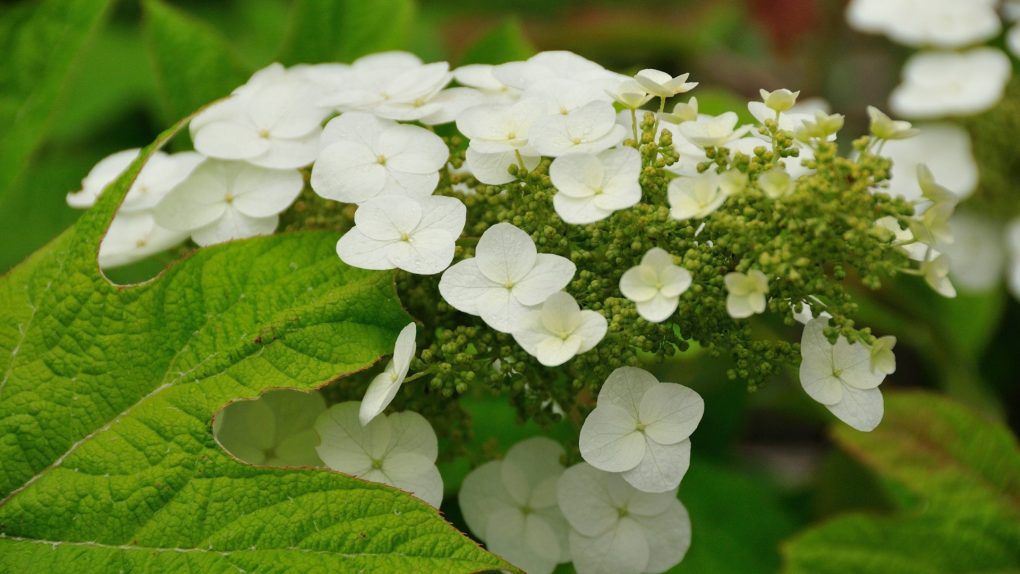
Alice is a popular cultivar of Oakleaf hydrangeas with large, showy blooms that turn pink as they mature. It thrives in partial shade and moist soil, ideal for gardens or landscapes. This shrub can add color and texture to your garden.
Snow Queen (H. quercifolia ‘Snow Queen’)
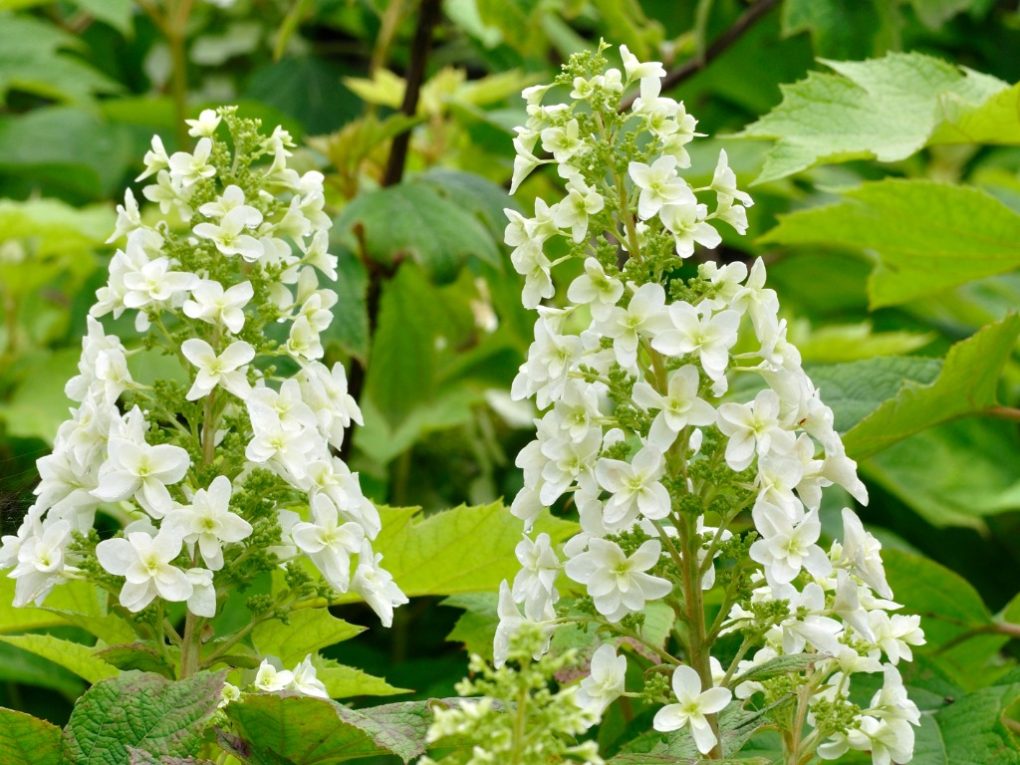
Snow Queen is a hardy and attractive Oakleaf Hydrangea variety that changes color from white to pink as it matures. It entices pollinators such as bees and butterflies with its beautiful blooms. This cultivar can flourish in various soil types and conditions, making it an excellent pick for gardeners throughout the United States.
Conclusion
Hydrangeas are classic, timeless flowers that can add elegance and charm to any garden. With so many varieties available, it’s easy to feel overwhelmed. However, with this guide, you can make an informed decision about which type of hydrangea is right for your garden based on bloom color, size, and shape. Remember that different hydrangeas require different
